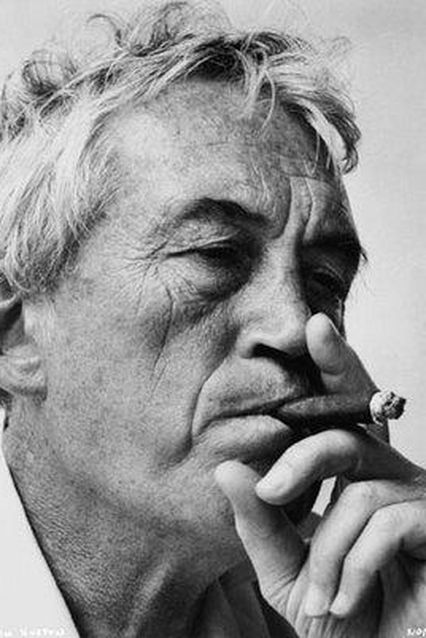Texas, 1890. The bandit Roy Bean reaches a poor village, where he is beaten. After ferociously punishing his aggressors, Roy transforms a whorehouse into a saloon and courtroom, and proclaims himself to be a judge. In just a few years, the village becomes a small, tranquil town, where order reigns thanks to summary executions. In 1925, Roy Bean suddenly returns to town, setting off a battle...
Biography
film director

John Huston
John Huston
(Nevada, MO, USA, 1906 - Middletown, RI, USA, 1987)
The son of the actor Walter Huston and the journalist Reah Gore, after his parents divorced he lived with his mother in various cities in the United States until they eventually settled down in Los Angeles. This is where he became interested in the figurative arts, in the French language and in boxing, a sport in which he excelled. In 1924, during a trip to New York to see his father who was appearing on Broadway, he debuted as a theatrical actor, a profession he soon abandoned in order to join the Mexican cavalry. He moved to Mexico City and dedicated himself to writing. He returned to the United States in 1929, after receiving the news that a short story of his had been published in the magazine “American Mercury.” He was called to Hollywood by Samuel Goldwyn and worked as a screenwriter at Metro, Universal Pictures and Gaumont-British in London. In 1938 he was hired by Warner, for whom he wrote the script of Jezebel, directed by William Wyler, and High Sierra, the film which made Humphrey Bogart an international star. The success of this film led to Huston’s debut as a director that same year with The Maltese Falcon. The next year, he directed In This Our Life and Across the Pacific, after which the Army asked him to shoot three war propaganda documentaries. After returning to the States, his film The Treasure of the Sierra Madre (1948) won three Oscars, including Best Supporting Actor for his father Walter. He next directed Key Largo and in 1950, the noir The Asphalt Jungle. These were the years of McCarthyism, which he and his friend Bogart strongly opposed, and he worked on subjects that dealt less with current affairs, like The African Queen, Moulin Rouge and Moby Dick. In 1960, he directed The Misfits, which was written by Arthur Miller and was the last film Marilyn Monroe and Clark Gable acted in. 1966 was the year he directed the blockbuster The Bible in Italy, in which he portrayed Noah, and the following year he made Reflections in a Golden Eye, based on the novel of the same title by Carson McCullers. At the same time as he was directing, he was also acting in films like The Cardinal (1963) by Otto Preminger (which won him a Golden Globe), the unfinished The Other Side of the Wind (1972) by Orson Welles, Chinatown (1974) by Roman Polanski and The Wind and the Lion (1975) by John Milius. After making a few films in Europe, he returned to the United States in 1972 to make Fat City. His film The Man Who Would Be King (1975), starring Sean Connery and Michael Caine, led to a period of inactivity, which ended when he directed Wise Blood (1979). He next directed a series of films, including Under the Volcano (1984), which received a special tribute in Cannes, and Prizzi’s Honor, which was presented in Venice in 1985 and for which his daughter Anjelica received an Oscar as Best Supporting Actress. In 1987 he shot his final film, The Dead, based on the famous short story by James Joyce.
Cast
& Credits
Soggetto e sceneggiatura: John Milius.
Director of photography: Richard Moore.
Music: Maurice Jarre.
Art director: Tambi Larsen.
Costume designer: Edith Head.
Editor: Hugh S. Fowler.
Sound: Lawrence Jost.
Cast and characters: Paul Newman (giudice Roy Bean), Ava Gardner (Lily Langtry), Victoria Principal (Maria Elena), Jacqueline Bisset (Rose Bean), Anthony Perkins (reverendo LaSalle), Tab Hunter (Sam Dodd).
Producer: John Foreman.
Production company: First Artists.


